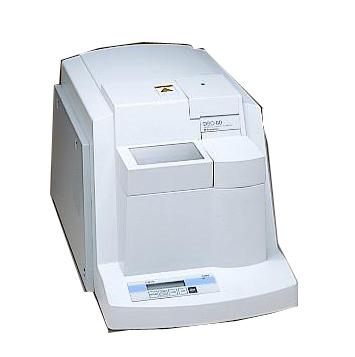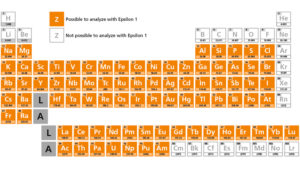
X-Ray Diffractometer Empyrean
X-ray crystallography is a tool used for identifying the atomic and molecular structure of a crystal, in which the crystalline atoms cause a beam of incident X-rays to diffract into many specific directions. By measuring the angles and intensities of these diffracted beams, a crystallographer can produce a three-dimensional picture of the density of electrons within the crystal. From this electron density, the mean positions of the atoms in the crystal can be determined, as well as their chemical bonds, their disorder and various other information.
PANalytical’s X-ray diffractometers are designed for obtaining the ultimate quality diffraction data, combined with ease of use and flexibility to quickly switch to different applications.
The most X-ray diffraction (XRD) and X-ray scattering applications on one platform
Our diffractometers are used in many environments, from universities and research institutes to industrial process control labs. Whatever your XRD need, we offer the right instrument, backed up by our worldwide sales and service organization.
Our multipurpose diffractometers are all equipped with PreFIX (pre-aligned, fast interchangeable X-ray) modules, making a change in the optical path effortless for the user. For this reason, we offer the most applications on a single diffractometer platform
Epsilon 1 is a fully integrated energy dispersive XRF analyzer consisting of a spectrometer, built-in computer, touch screen and analysis software. It is built for the characterization and analysis of any type of sample in many industry segments such as cement, cosmetics, environmental, food, forensics, metals and coatings, mining and minerals, nanomaterials, petrochemicals, pharmaceuticals, polymers and RoHS-2.
Robust and flexible quantification
Epsilon 1 can be calibrated using reference materials that match the composition of the routine samples. These dedicated calibrations result in accurate data with high precision. Epsilon 1 can be calibrated for a wide variety of industry applications. Epsilon 1 is a star-performing benchtop XRF instrument for the analysis of major, minor and trace elements from sodium to americium, across the periodic table.

X-Ray Fluorescence

Differential Scanning Calorimeter
Differential scanning calorimetry or DSC is a thermoanalytical technique in which the difference in the amount of heat required to increase the temperature of a sample and reference is measured as a function of temperature. Both the sample and reference are maintained at nearly the same temperature throughout the experiment. Generally, the temperature program for a DSC analysis is designed such that the sample holder temperature increases linearly as a function of time. The reference sample should have a well-defined heat capacity over the range of temperatures to be scanned.
The DSC-60 Plus is an indispensable thermal analyzer for materials characterization in R&D and quality control applications in such areas as polymers, pharmaceuticals, electronic parts, foods, etc. It offers the sensitivity and easy operation required for the development of high-performance, highly functional new materials.
- High-Performance General-Purpose DSC
- High sensitivity and high resolution
- Stable baseline from ultra-low to high temperatures
The new detector in the DSC-60 Plus series and the unique furnace construction achieve a stable baseline across the entire measured temperature range (-140-600°C) as well as top-class calorimetric sensitivity for a DSC. It features a wide dynamic measurement range of ±150 mW.
- Diverse Measurements by Simple Operations
- Cooling chamber installed as standard
- Sample loading temperature function is convenient for sample replacement
The liquid-nitrogen cooling chamber permits easy measurements below room temperature without having to install special accessories. The sample loading temperature function enables quick sample change during sequential analysis without moisture condensation.
- Complies with Analytical Laboratory Regulations
The DSC-60 Plus series complies with various guidelines involving analytical laboratories, such as the PIC/S GMP guidelines, and electronic record/electronic signature (ER/ES) regulations, including the US FDA 21 CFR Part11. In addition, it is compatible with other analytical instruments and connected network systems.
Thermogravimetric analysis or thermal gravimetric analysis (TGA) is a method of thermal analysis in which changes in physical and chemical properties of materials are measured as a function of increasing temperature (with constant heating rate), or as a function of time (with constant temperature and/or constant mass loss). TGA can provide information about physical phenomena, such as second-order phase transitions, including vaporization, sublimation, absorption, adsorption, and desorption. Likewise, TGA can provide information about chemical phenomena including chemisorptions, desolvation (especially dehydration), decomposition, and solid-gas reactions.
The TGA 55 is specifically designed for those that want rugged, reliable, and cost-effective TGA, and are not willing to accept poor data. Utilizing TA’s proprietary Tru-Mass™ Balance as the core of the system, the TGA 55 will outperform competitive research-grade models. Its sensitivity, accuracy and ease-of-use make this TGA an ideal instrument for basic research, teaching or industrial labs that need quality results.

Thermal Gravimetric Analyzer

THERMAL MECHANICAL ANALYZER
Thermomechanical analysis (TMA) is a technique used in thermal analysis, a branch of materials science that studies the properties of materials as they change with temperature. Thermomechanical analysis is a subdiscipline of the thermomechanometry (TM) technique. Thermomechanometry is the measurement of a change of a dimension or a mechanical property of the sample while it is subjected to a temperature regime. An associated thermoanalytical method is thermomechanical analysis. A special related technique is thermodilatometry (TD), the measurement of a change of a dimension of the sample with a negligible force acting on the sample while it is subjected to a temperature regime. The associated thermoanalytical method is thermodilatometric analysis (TDA).
The Q400 is a sixth-generation product from the world leader in thermal analysis. Its performance, ease-of-use, and reliability aptly demonstrate our long experience in designing novel instruments for high sensitivity mechanical measurements over a wide temperature range.
The Q400EM is the industry standard research-grade thermomechanical analyzer (TMA), with unmatched flexibility in operating modes, test probes, fixtures, and available signals. The Q400EM Enhanced Mode allows for dynamic experiments to measure complex, storage and loss moduli, as well as Modulated TMA™ in which reversing and non-reversing components of displacement are available. It is ideal for research, teaching, and quality control applications, with unmatched performance.
Zeta potential is a scientific term for electrokinetic potential in colloidal dispersions. In the colloidal chemistry literature, it is usually denoted using the Greek letter zeta (ζ), hence ζ-potential. From a theoretical viewpoint, the zeta potential is the electric potential in the interfacial double layer (DL) at the location of the slipping plane relative to a point in the bulk fluid away from the interface. In other words, zeta potential is the potential difference between the dispersion medium and the stationary layer of fluid attached to the dispersed particle.
|
NanoPlus-2 Zeta Potential Analyzer (-200 mV to +200 mV) |
A unique instrument for zeta potential measurements in suspensions. The measurement principle is based on electrophoretic light scattering method. Allows for accurate measurements in highly concentrated and dark suspensions of concentrations from 0.001% up to 40%. |

Zeta Potential Analyzer

Particle Size Analyzer SALD
Particle size analysis, particle size measurement, or simply particle sizing is the collective name of the technical procedures, or laboratory techniques which determines the size range, and/or the average, or mean size of the particles in a powder or liquid sample. The particle size can have considerable importance in a number of industries including the chemical, food, mining, forestry, agriculture, nutrition, pharmaceutical, energy and aggregate industries.
Particle Size Analyzer SALD 2300 measurement range is 17nm to 2500μm. Applicable to a Wide Range of Applications Using Optional Units and Application Software Packages.
- Wide applicability
- Using the SALD-MS23 sampler, the measurement range is 17nm to 2500μm for wet measurement.
- Various sample amounts (Suspension) can be selected according to measurement objects and purposes. Sample amount for SALD-MS23 is variable: 100mL, 200mL, or 300mL.
- High sensitivity / High concentration
- By enabling measurement under wide particle concentration conditions (0.1ppm to 20%), changes in particle size distribution depending on particle concentration can be evaluated. Previously, the particle concentration of a sample had to be adjusted to meet the optimum conditions of analyzers by dilution or concentration using a centrifuge. In these cases, changes in particle size distribution, such as agglomerations or dispersions, could not be considered.
- Dispersions and agglomeration can be caused by dilutions. In some cases, dilutions can accelerate dispersions, but in other cases, they can create agglomerates. To ensure optimum, the initial particle concentration must be determined without dilutions or concentrations. After the evaluation of particle size distribution at the initial state, the effects of particle concentration from dispersions and agglomerations must be evaluated.
- Wide particle concentration range must be covered to evaluate the dissolution process of sample particles. This is necessary because the progress of dissolution makes the particle concentration low in comparison to the first particle concentration. SALD-2300 can measure particle size distribution under the conditions of particle concentration from 0.1ppm to 20%. When the sampler SALD-MS23 or batch cell SALD-BC23 is used, measurements are possible under conditions of concentration from 0.1ppm to 100ppm. When the high-concentration sample measurement system SALD-HC23 is used, high-concentration samples up to 20% can be measured because the negative effects of multiple scattering are prevented.
- Measurement without dilution of hand cream. In the case of hand cream, dilutions make the particle size distribution narrow. Measurements without dilutions must be done to obtain accurate measurement.
- Evaluation of a fine particle included in red wine. The low-concentration sample can be measured as an undiluted solution. Measuring it in this state can remove the influence of dispersion or agglomeration by the concentration operation.
- Evaluation of negative electrode material of a secondary battery. The agglomeration particle (micrometer range) has been dispersed to the fine particle (sub-micrometer range) by dispersion processing using a homogenizer. The sample (sample that absorbs light like the carbon black) that doesn’t transmit light easily can be measured based on the improvement in sensitivity.
